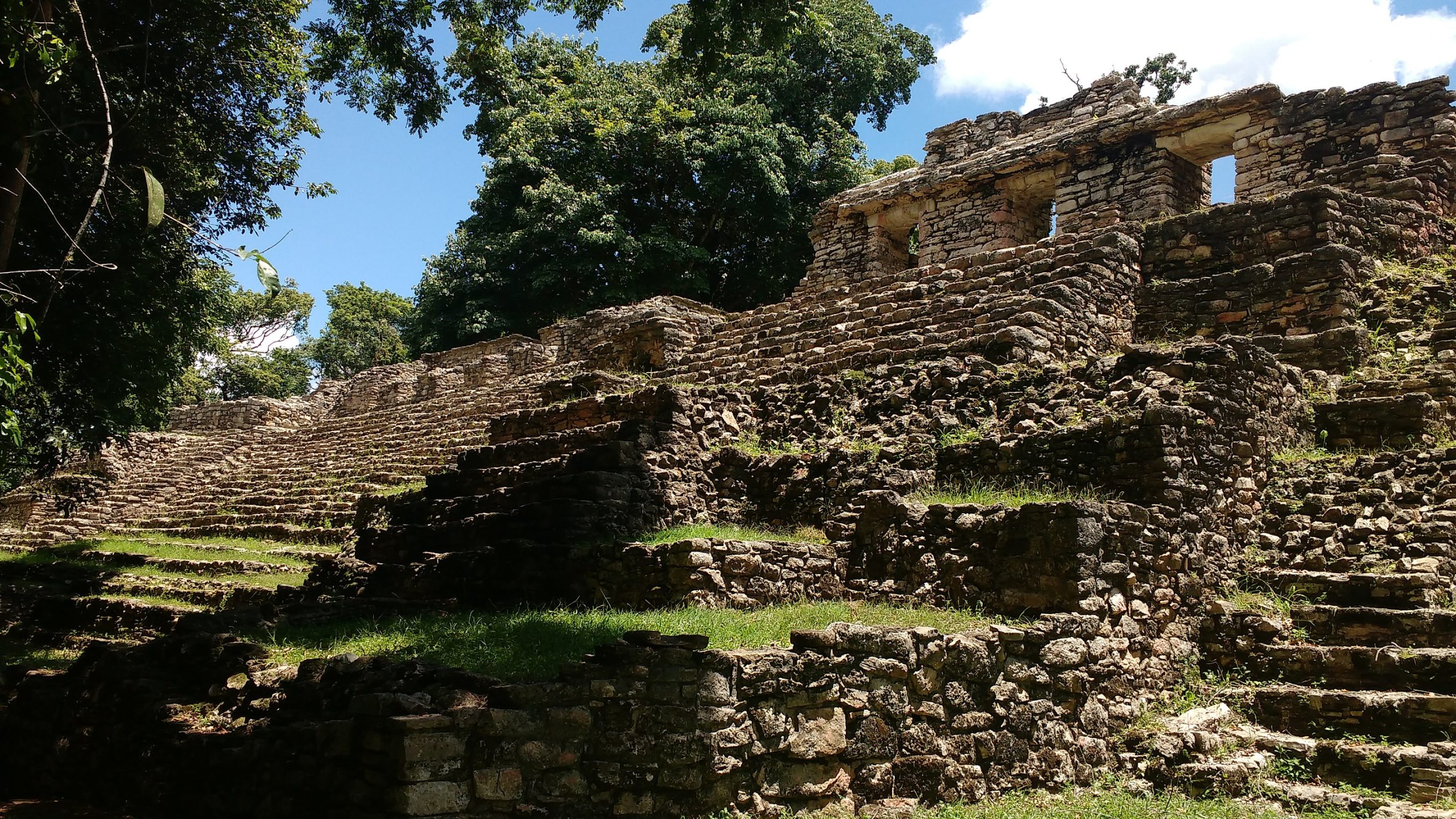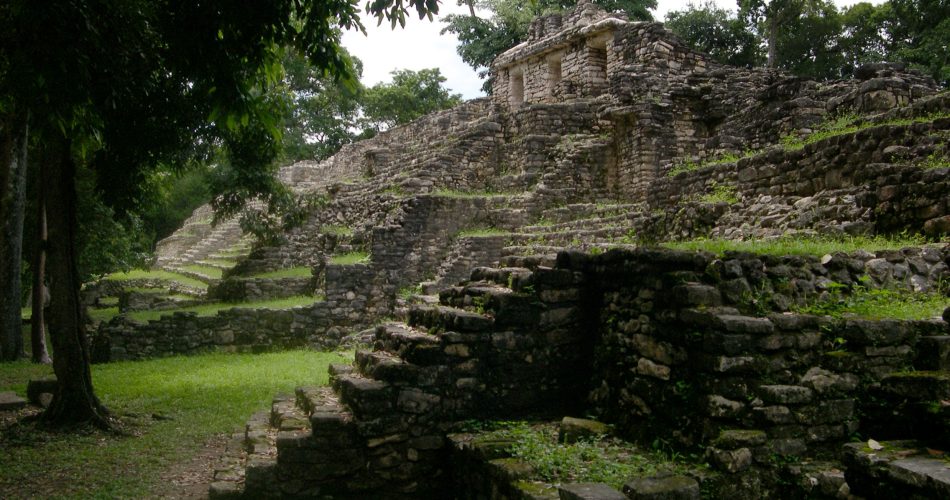The ancient Maya city of Yaxchilan is located along the Usumacinta River in Chiapas, Mexico. Between 600 and 900 AD, Yaxchilan was at its peak, thriving through trade and influence. Its prime spot along the river gave Yaxchilan control over key territories and positioned it as a powerful city-state, often clashing with its rival, Piedras Negras.
But beyond its strategic location and history, what really sets Yaxchilan apart is its architecture—especially its pyramids, which have survived as symbols of the city’s deep spiritual and political roots.
The Pyramids of Yaxchilan: Power in Stone
At Yaxchilan, pyramids were more than just impressive stonework—they were crucial to religious and political life. Among these, Structure 33 (image below) stands out as one of the most significant. This stepped pyramid temple was likely used for major ceremonies and gatherings. Its stone panels are decorated with carvings of rulers and deities, each detail providing a glimpse into the lives and beliefs of the ancient Maya. As I have previously explained, for the ancient Maya, pyramids weren’t just large structures; they represented the connection between the earth and the gods. Every layer and step was believed to bring the rulers closer to the divine, while also serving as a lasting monument to their power.
One of the most famous carvings from Yaxchilan, Lintel 24, shows a scene of ritual bloodletting performed by the city’s ruler Itzamnaaj B’alam II and his wife, Lady K’ab’al Xook. This ceremony was thought to communicate directly with the gods, reflecting the Maya’s strong belief in sacrifice and connection to the spiritual realm. These kinds of carvings cover many of Yaxchilan’s structures, blending artistry with spiritual and social messages that were central to Maya life.

Photo taken in the Archaeological Zone of Yaxchilan, in the municipality of Ocosingo, Chiapas, Mexico. Credit: Wikimedia Commons.
Yaxchilan is an ancient site with a lasting impact on Maya culture. The city’s temples and pyramids showcase how the Maya combined political power and religious beliefs into their architecture, creating spaces with deep meaning. The rulers here used carvings and symbols to express their connection to the spiritual world, the environment, and their community—values that were central to Maya society.
The structures and carvings at Yaxchilan give us a clear window into the Maya worldview. They are a testament to the artistry, knowledge, and beliefs that defined Yaxchilan and shaped other Maya cities. For anyone wanting to understand the ancient Maya, Yaxchilan’s architecture and art tell a story unlike any other
Why Yaxchilan’s Pyramids Are Still Important Today
Visiting Yaxchilan is not just a chance to see ancient ruins; it’s another site where you can experience the grandeur of Maya culture firsthand. Getting there is an adventure in itself, because you can get a boat ride along the Usumacinta River, with the dense jungle providing a natural setting that feels like stepping back in time. As you approach the site, the ruins slowly emerge, hinting at the incredible civilization that once thrived here. Wandering through Yaxchilan, you’re surrounded by structures that served as gathering places, ceremonial sites, and symbols of a complex society deeply connected to its surroundings.
The pyramids of Yaxchilan remind us that ancient people built structures that were more than practical—they were cultural landmarks, expressing ideas of power, community, and spirituality. Undobtedly, Yaxchilan offers a glimpse into a world where architecture was deeply symbolic, and where the pyramids still hold stories of a people who understood the balance between nature, community, and the divine. Check out the location of this ancient site on the map below.

